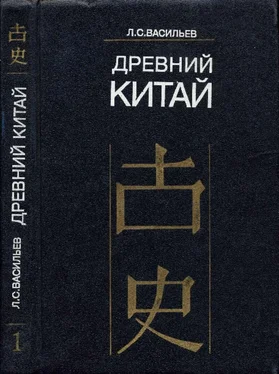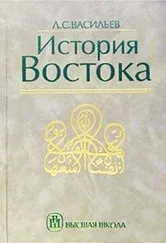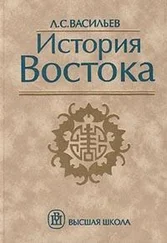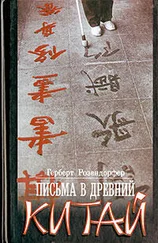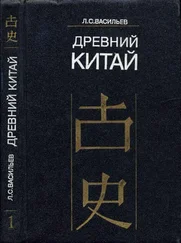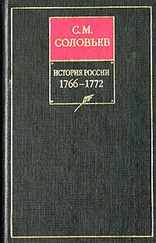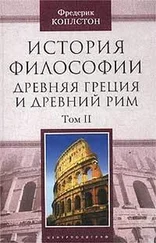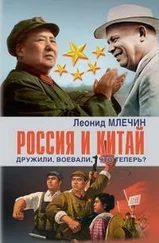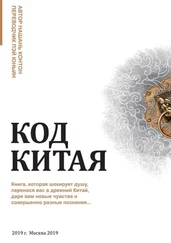Леонид Васильев - Древний Китай. Том 2 - Период Чуньцю (VIII-V вв. до н.э.)
Здесь есть возможность читать онлайн «Леонид Васильев - Древний Китай. Том 2 - Период Чуньцю (VIII-V вв. до н.э.)» весь текст электронной книги совершенно бесплатно (целиком полную версию без сокращений). В некоторых случаях можно слушать аудио, скачать через торрент в формате fb2 и присутствует краткое содержание. Город: Москва, Год выпуска: 2000, ISBN: 2000, Издательство: Восточная литература, Жанр: История, на русском языке. Описание произведения, (предисловие) а так же отзывы посетителей доступны на портале библиотеки ЛибКат.
- Название:Древний Китай. Том 2: Период Чуньцю (VIII-V вв. до н.э.)
- Автор:
- Издательство:Восточная литература
- Жанр:
- Год:2000
- Город:Москва
- ISBN:5-02-018103-Х
- Рейтинг книги:5 / 5. Голосов: 1
-
Избранное:Добавить в избранное
- Отзывы:
-
Ваша оценка:
- 100
- 1
- 2
- 3
- 4
- 5
Древний Китай. Том 2: Период Чуньцю (VIII-V вв. до н.э.): краткое содержание, описание и аннотация
Предлагаем к чтению аннотацию, описание, краткое содержание или предисловие (зависит от того, что написал сам автор книги «Древний Китай. Том 2: Период Чуньцю (VIII-V вв. до н.э.)»). Если вы не нашли необходимую информацию о книге — напишите в комментариях, мы постараемся отыскать её.
Древний Китай. Том 2: Период Чуньцю (VIII-V вв. до н.э.) — читать онлайн бесплатно полную книгу (весь текст) целиком
Ниже представлен текст книги, разбитый по страницам. Система сохранения места последней прочитанной страницы, позволяет с удобством читать онлайн бесплатно книгу «Древний Китай. Том 2: Период Чуньцю (VIII-V вв. до н.э.)», без необходимости каждый раз заново искать на чём Вы остановились. Поставьте закладку, и сможете в любой момент перейти на страницу, на которой закончили чтение.
Интервал:
Закладка:
As far as kingdoms and princedoms were concerned, each of them had its internal hierarchy, generally of a similar type. Places of distinguished high officials and ministers in it were usually occupied by ch 'ings, heads of hereditary patrimonial estates. They were, as a rule, not so numerous, usually about 3–6 unless it was a big Chin. They were of different origin. Some came from the ruling house, others were aristocrats not related to the rulers. But that had no noticeable effect on the stability of the political structure since in both cases ch'ings were powerful and their increased influence sometimes undermined the absolute power of the ruler. That is why the chu-hou after the allotment of the first sub-appanages-ancestral lands, usually refrained from further land division even when it concerned their favourite sons. Since sons were mentioned: each of chu-hou and ch 'ings (this refers to wangs as well) had the right to pass the throne to one of his sons, whom he himself selected. That often led to a lot of murderous intrigues. Women from the harem fought defiantly to have their sons selected. Let us remember that the last West-Chou ruler lost his throne and life exactly because he conceded to his favourite concubine and replaced his elder son from inheriting the throne. Such episodes repeated themselves in different kingdoms and princedoms more than once. The game was worth it: it was only one who could get all. The rest of the sons, who were quite a few in harems, could only expect a knight status {ta-fu\ i.e. a warrior-aristocrat on a chariot. In the best case some ta-fu received a town as conditional benefice-alimentation. But many remained even without this and worked for their master only for pay. Ta-fu numbered several thousands in a big kingdom and several hundreds in a medium one. At the end of the Ch'un-Ch'iu period huge numbers of aristocrats of the lowest rank, shih, appeared. These were descendants of ta-fu or common people promoted during their service, especially from successful warriors and servants.
The second half of the Ch'un-Ch'iu period passed, as it was mentioned earlier, under the badge of de-feudalization of the Chou feudalism that had not enough time for final development. What played the main role in it? There were plenty of reasons. Firstly, feudal wars which ended either in annexation of weak princedoms and semi-barbarian tribal proto-states or just in sorting out relationships (those killed in wars were considered as a sacrifice to the ancestors or the territorial deity-she). But the wars contributed to the mutual destruction of aristocracy although the tempo of its reproduction in harems was fairly fast. Secondly, what is more important, the piety with regard to the early Chou, when the first rulers from that house, especially Chou-kung, had a stiff grip over the supreme power, remained. It was the time when the first rulers of appanages felt not so much as powerful vassals but as commanders of Chou garrisons in different, often rather remote areas. Thirdly, the wang himself and his advisors, including influential historiographers considered tfye situation of disunity in T'ien-hsia as abnormal and searched for every possible way to correct this situation. And, finally, in the fourth place, what should be considered nearly the most important thing-in the second half of the Ch'un-Ch'iu period in T'ien-hsia serious changes of social-political and administrative character took place. It was the beginning of the Iron Age with new tools, development of commodity and monetary relations, flourishing of towns of new type that worked for the market and were full of artisans and merchants that were growing rich. In these circumstances feudal appanages were replaced by administrative and territorial districts headed by removable clerks-sAe, who were obviously displacing the former aristocracy. It should be mentioned that the formal acknowledgement of branches of aristocratic kin was limited to the first five generations.
Everything started from the appearance of new ideas. The matter concerns an ideologeme about the wise ancient rulers. As it was mentioned before, the Shang people knew or reported nothing in their numerous inscriptions on bones and turtle plastrons (they are called "fortune-telling inscriptions") about their past, even the recent one. Specialists know from authentic sources only the names of predecessors of the ruling wang, to whom sacrifices were made, including human sacrifices (from the captives of barbarian tribes that surrounded Shang). These are the only names to be found in fortune-telling inscriptions. But it is worth repeating that as far as events or legends are concerned, especially the epos glorified by the descendants or the mythology preserved in their memory, no names of gods, etc., or any information of that sort can be found in Shang inscriptions. At the same time in the reign of Chou-kung, who should be considered the founder of historical thinking and the corresponding tradition in China, an ideologeme about the Three Dynasties was created. These dynasties interchanged cyclically according to the principle of an ethic determinant, i.e. presence or absence of the sacral grace te. But at that time this was only a bare scheme. It was high time to fill it with live historic material borrowed from legends of different tribes that once had joined the Chou T'ien-hsia. That was done exactly in the chapters of the second layer of Shou-king, which was most probably created by historiographers who lived at wang's court in the 7th-6th centuries ВС. They were more than others concerned-together with their master-about glorifying the Son of Heaven and his role as the real ruler over T'ien-hsia.
The essence of the content of the newly written chapters was that once there lived the great and wise Emperor Yao, who possessed the sacred te and brought harmony first to his close relatives, then his countrymen, and later on the whole world which resulted in an epoch of prosperity. Yao did not give the power to his son, whom he did not consider suitable for that but chose the worthiest among the worthy, Shun, who became famous for the ability to observe the norms of family way of life in unfavourable conditions (a weak father, a quarrelsome stepmother, a nasty stepbrother). Yao gave two of his daughters as wives to Shun in order to check him once again. Shun stood this test honorably: his family was according to the norms. Then Yao, while he was still alive, gave Shun reins of government in T'ien-hsia. Shun managed to become a worthy successor of Yao. He divided T'ien-hsia into 12 parts and appointed governors to rule them, ordering that wise and capable should be promoted. Shun improved his relationships with vassals by formulating the Code of punishment and personally controlled the activity of administrators by rewarding or punishing them according to the results of their work. After Shun, who also did not dare to pass over the power to his son, whom he did not consider worthy and wise enough for that, the power was granted to one of his best assistants, Yu. It was from him, who passed the throne over to his son at the request of the people, that a faceless dynasty Hsia obviously invented by Chou-kung long before that, began.
The ideologeme about the three great leaders, thus absorbed not only the names borrowed from other tribes but also some vague ideas of the past that not always had the throne been passed over from the father to the son. The main thing put forward was the idea of a wise centralized governing, obviously opposed to the destructive feudal disunity of the Ch'un-Ch'iu period. The whole prehistory of T'ien-hsia was described in a few pages of the chapters in question that now start the canonic text of Shou-king. The prehistory was presented in the way Chou historiographers understood it and, what is most important, the way it should have looked like taking into consideration the spirit of the general cyclic scheme of dynasties and the didactic purposes of the composition. The scheme of Chou-kung although ingenious but still bare, nameless and eventless, was finally replaced by an elaborate and detailed history, full of names and events. The way a history should be. This history had an enormous influence on next generations.
Читать дальшеИнтервал:
Закладка:
Похожие книги на «Древний Китай. Том 2: Период Чуньцю (VIII-V вв. до н.э.)»
Представляем Вашему вниманию похожие книги на «Древний Китай. Том 2: Период Чуньцю (VIII-V вв. до н.э.)» списком для выбора. Мы отобрали схожую по названию и смыслу литературу в надежде предоставить читателям больше вариантов отыскать новые, интересные, ещё непрочитанные произведения.
Обсуждение, отзывы о книге «Древний Китай. Том 2: Период Чуньцю (VIII-V вв. до н.э.)» и просто собственные мнения читателей. Оставьте ваши комментарии, напишите, что Вы думаете о произведении, его смысле или главных героях. Укажите что конкретно понравилось, а что нет, и почему Вы так считаете.
